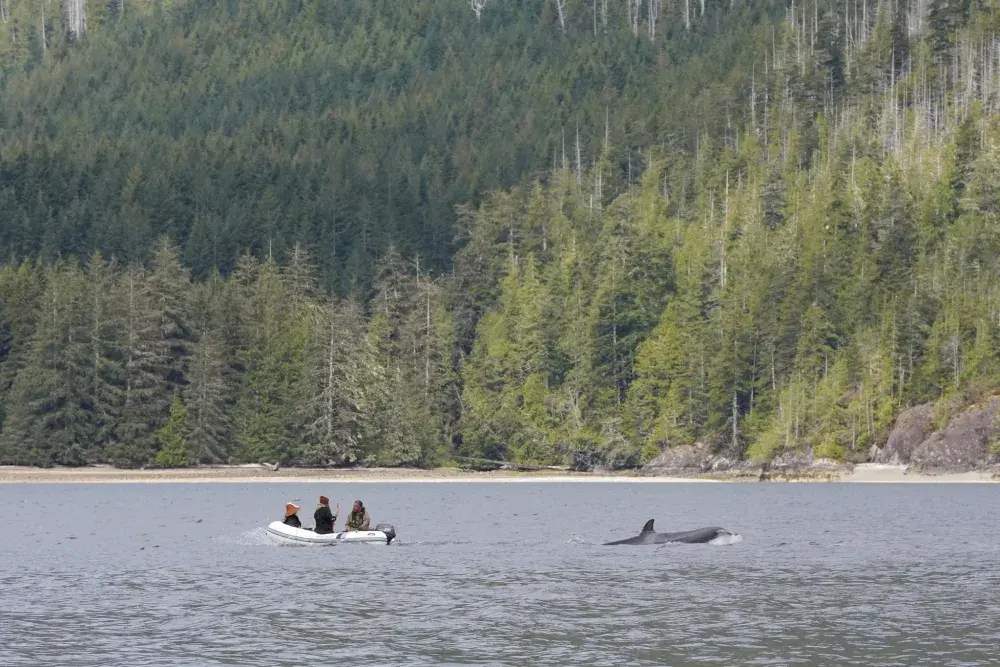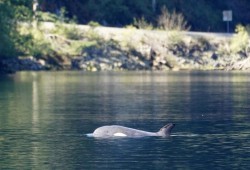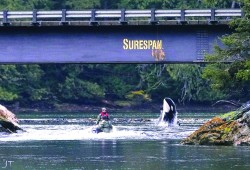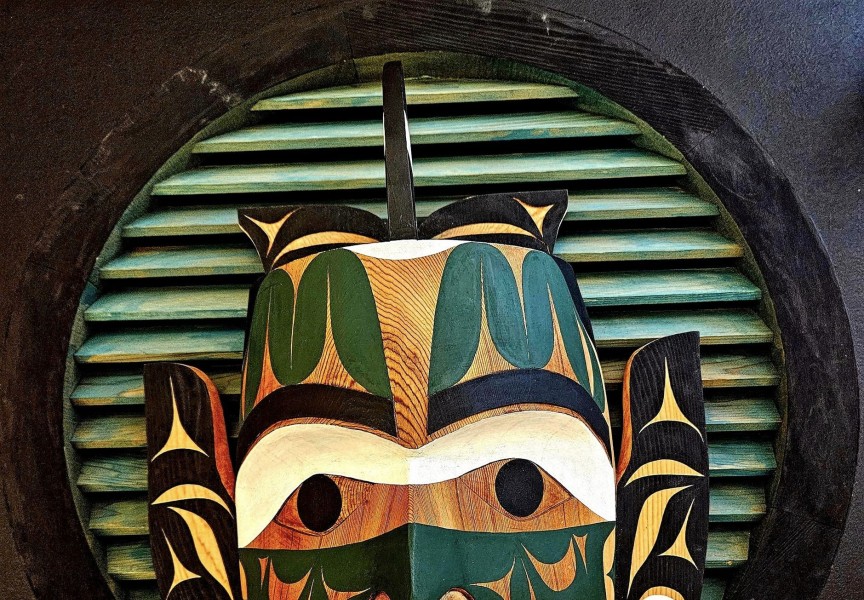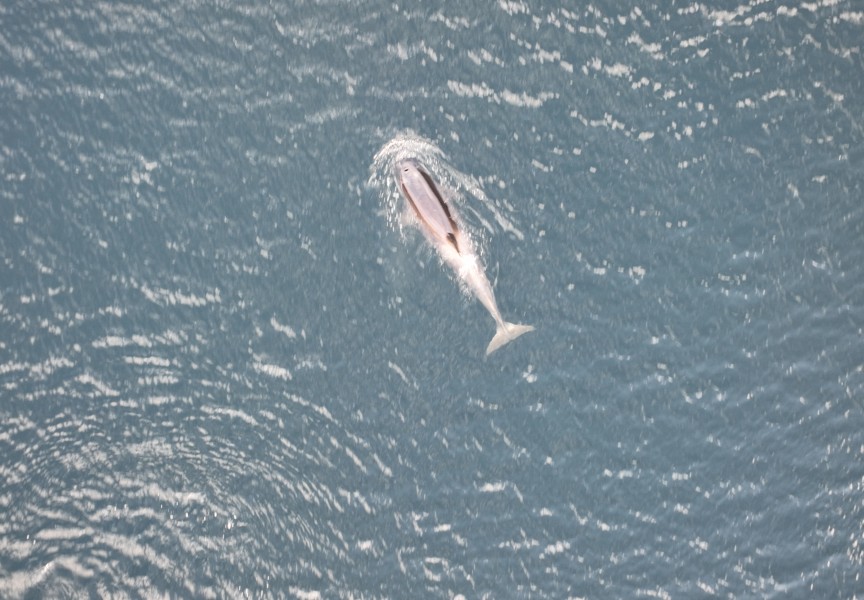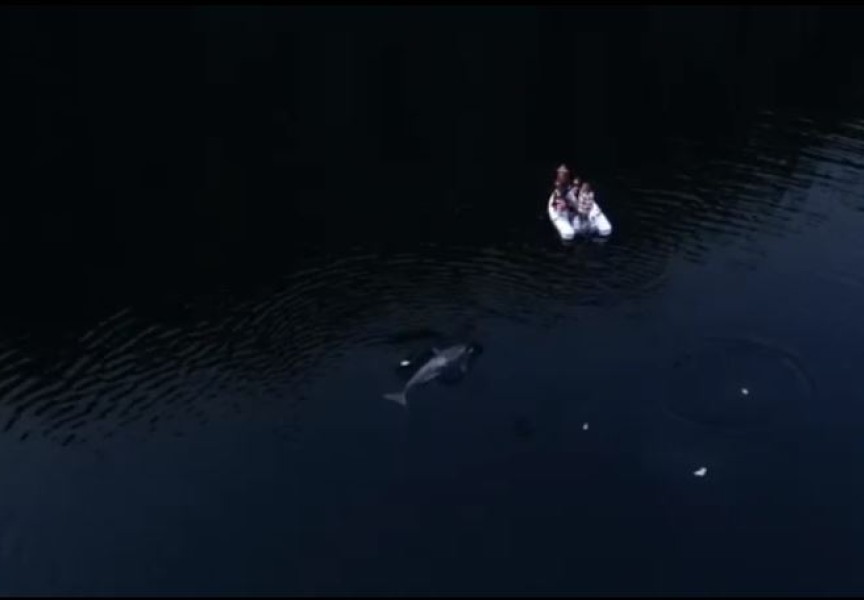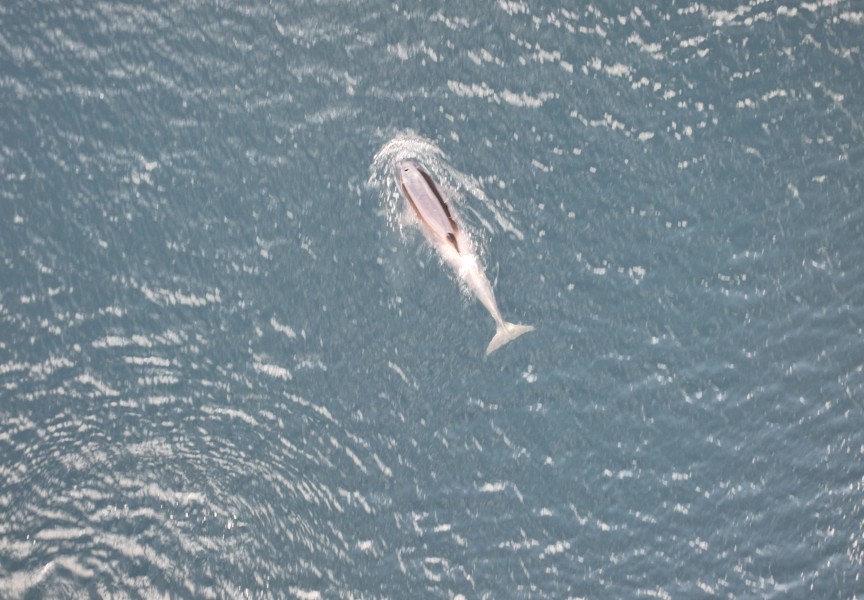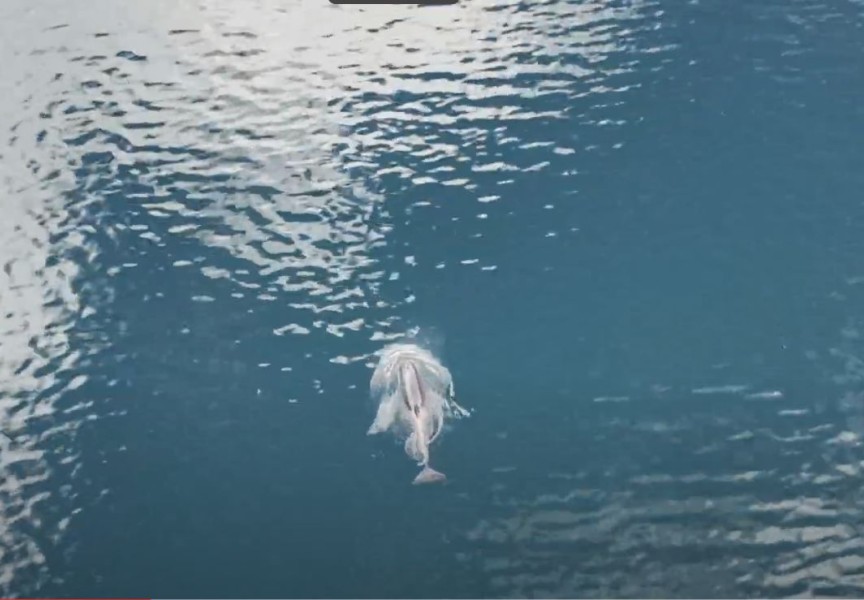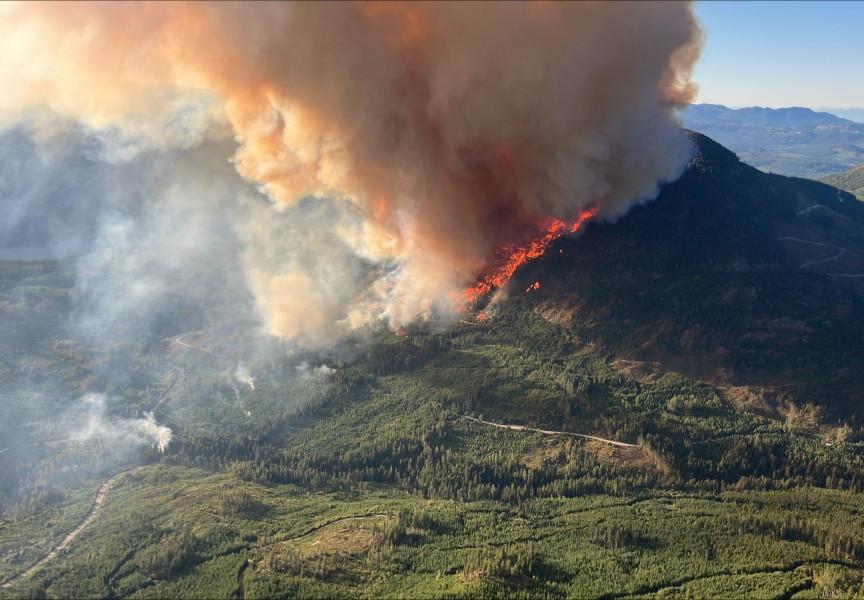It has been a week since a juvenile killer whale ventured out of the little lagoon where her mother died the month before, and the world is excited at the prospect of her successful reunion with her pod, and a long, happy life.
But local First Nations and Fisheries and Oceans Canada (DFO) are urging the public to keep their distance from the whale as she makes her way up Esperanza Inlet in search of her pod.
It was on March 23rd that kʷiisaḥiʔis (translates to brave little hunter) and her pregnant mother entered the lagoon. It is believed the mother was teaching her daughter how to hunt seals. When the tide receded, the mother orca became stranded on a sandbar and drowned, despite efforts to save her. A transient, or Bigg’s killer whale, she was found with the remains of a seal in her mouth.
Over the following month a group of dedicated people worked hard to monitor the young whale and find ways to safely get her out of the shallow lagoon. Concerned that she was beginning to show signs of starvation, First Nations fisheries staff began feeding the whale seal meat, tossed at a distance from a boat.
When the young whale accepted the seal meat, the people were happy, but there was also concern mixed in.
“[T]here was mixture of relief that that she wouldn’t starve but also worry that she would be associating boats with food,” said Ehattesaht Chief Councillor Simon John.
It is known how intelligent, adaptable, and impressionable young killer whales are.
When kʷiisaḥiʔis left the lagoon on Friday, April 26 to make her way toward the ocean, everyone was excited and hopeful that she would reconnect with her pod.
“Bigg’s pods are very adaptable and open to adopting young animals and we remain optimistic about her chances of survival,” said Lara Sloan of DFO. “However, it is vitally important to her survival that she is not disturbed and further habituated to people or boats.”
John says that in the days since kʷiisaḥiʔis left the lagoon, she has been monitored to ensure her safety.
“Sadly, we have had reports of some interactions with vessels in the area,” he stated. “Right from the start the nation has been concerned over the Brave Little Hunter being habituated and this factored heavily into all planning.”
Fisheries and Oceans Canada (DFO) says they continue to work with First Nations, whale watchers and researchers to monitor the location of Bigg’s killer whales.
“DFO will be patrolling and monitoring the area to ensure there are no boats trying to locate her, which will impact kʷiisaḥiʔis’s (Brave Little Hunter’s) ability to join up with a passing pod,” DFO said in a statement. “The team is also monitoring the location of the juvenile whale while she seeks out her family, the T109A pod.”
“We are very confident that she can survive out there on her own and we have even heard she is chasing sea otter,” said Chief John. “She can hear and be heard by her family as they pass by. The most important issue now is that she be left alone.”
Ehattesaht and the DFO’s Marine Mammal Response Unit are increasing patrols to prevent boaters from contacting kʷiisaḥiʔis.
“If you are travelling through the area, please remember there is a small orca. If you do see her, change your course to avoid her. Do not stop to watch her. Under no circumstances are you to engage with her,” warns Chief John.
According to DFO, disturbance to marine mammals is prohibited under the Marine Mammal Regulations and could result in potential fines of up to $100,000. Please keep 400 metres away from killer whales in southern B.C. waters and 200 metres away in all other parts of Pacific Canadian waters.
For more information, please visit: Watching marine wildlife (dfo-mpo.gc.ca)

